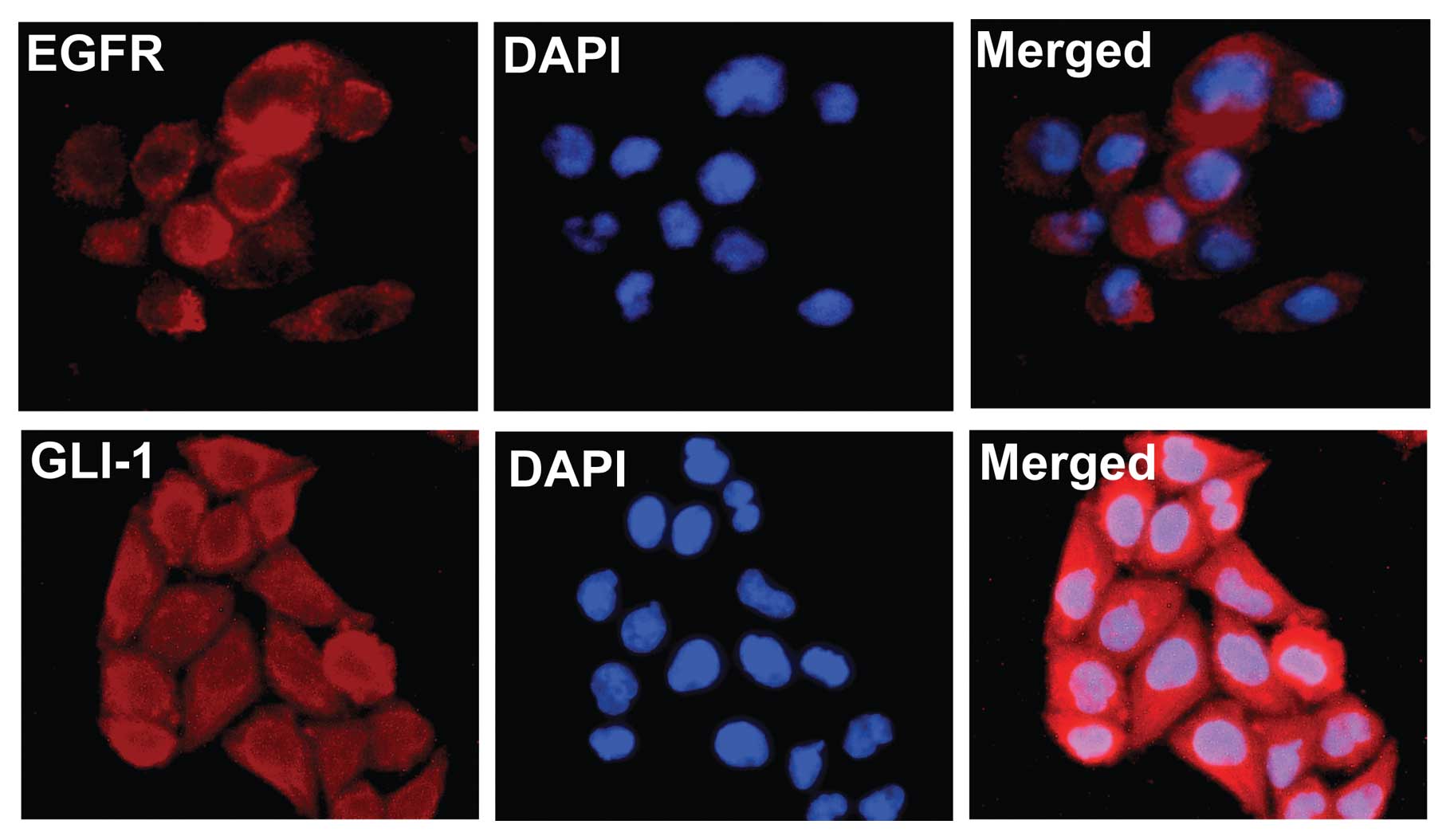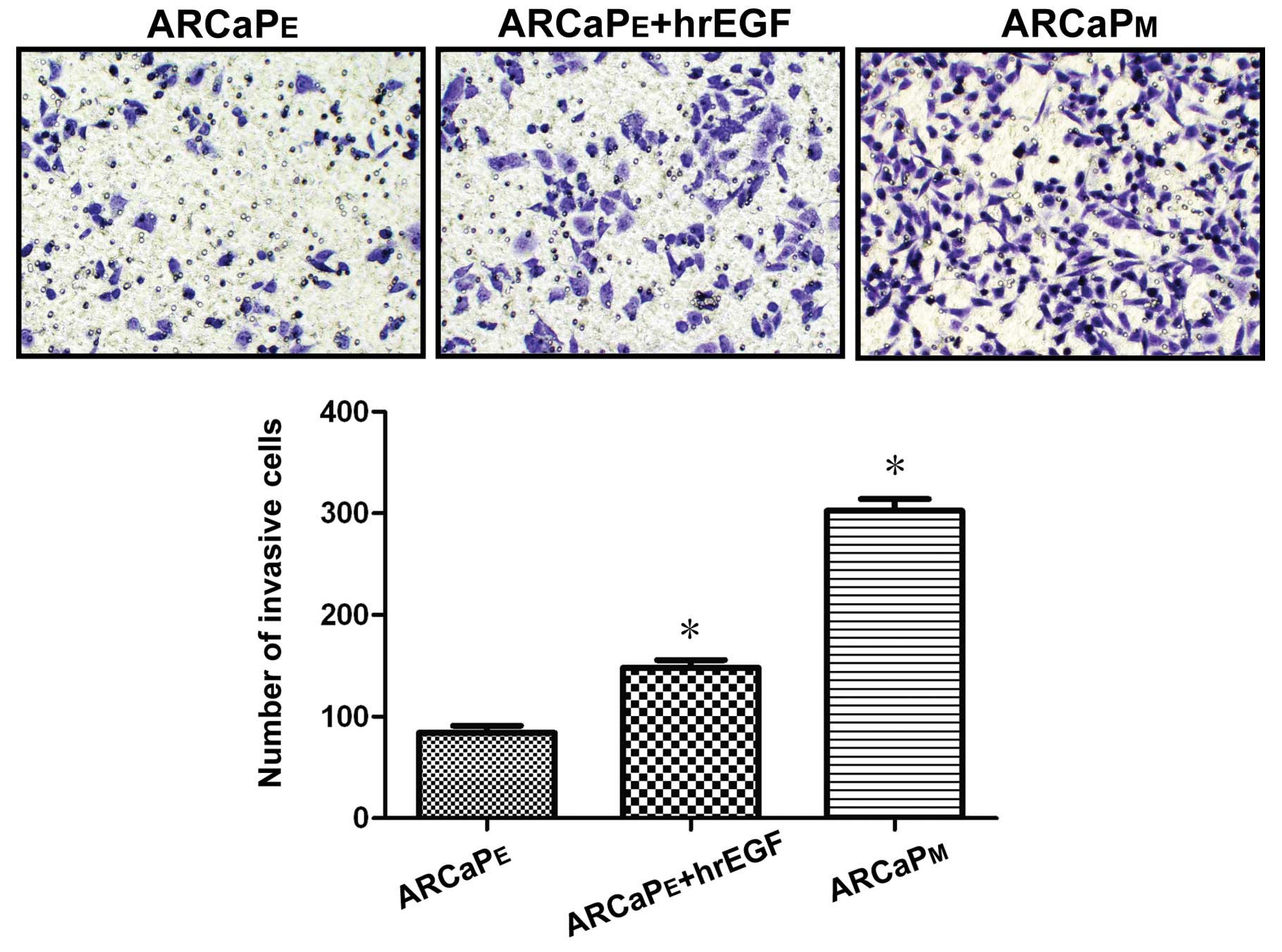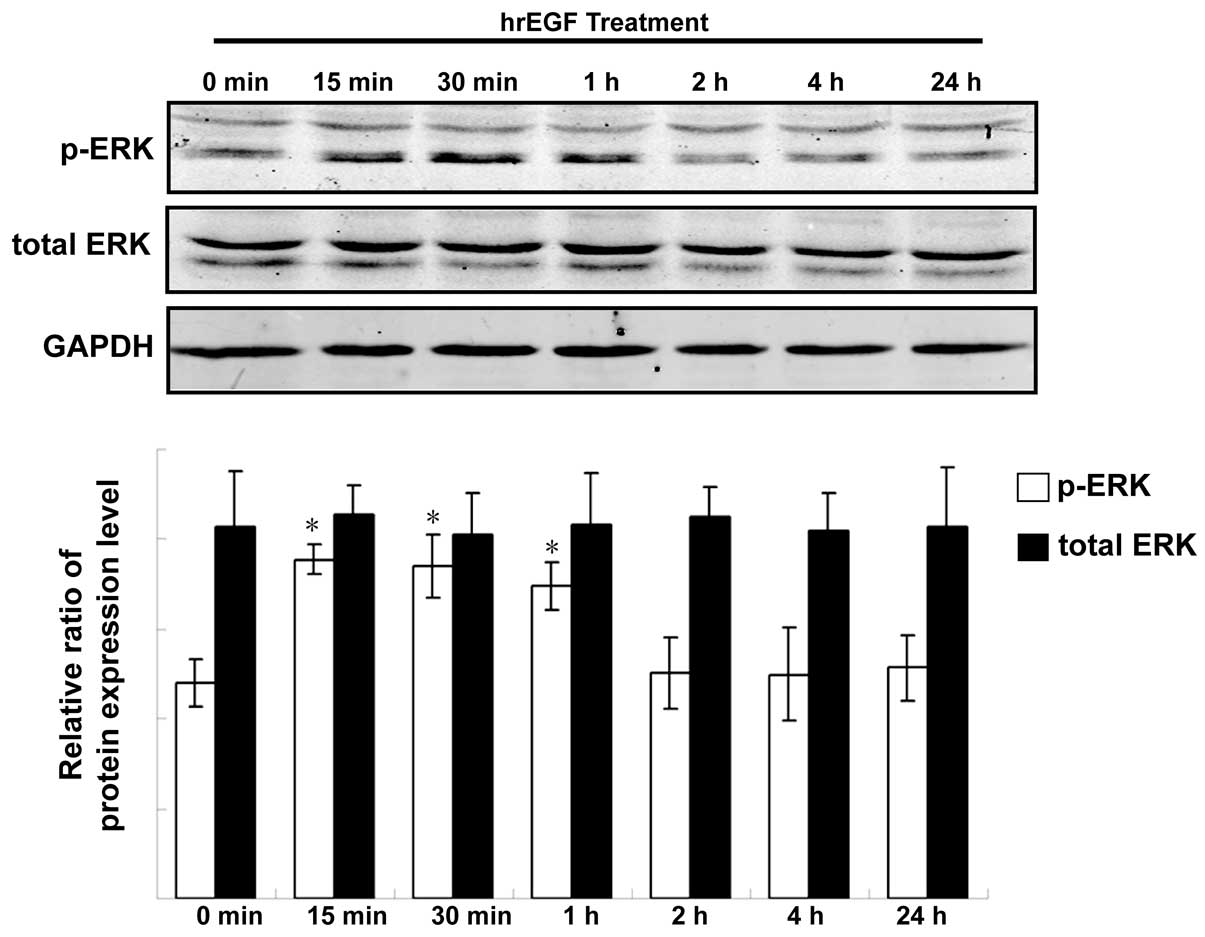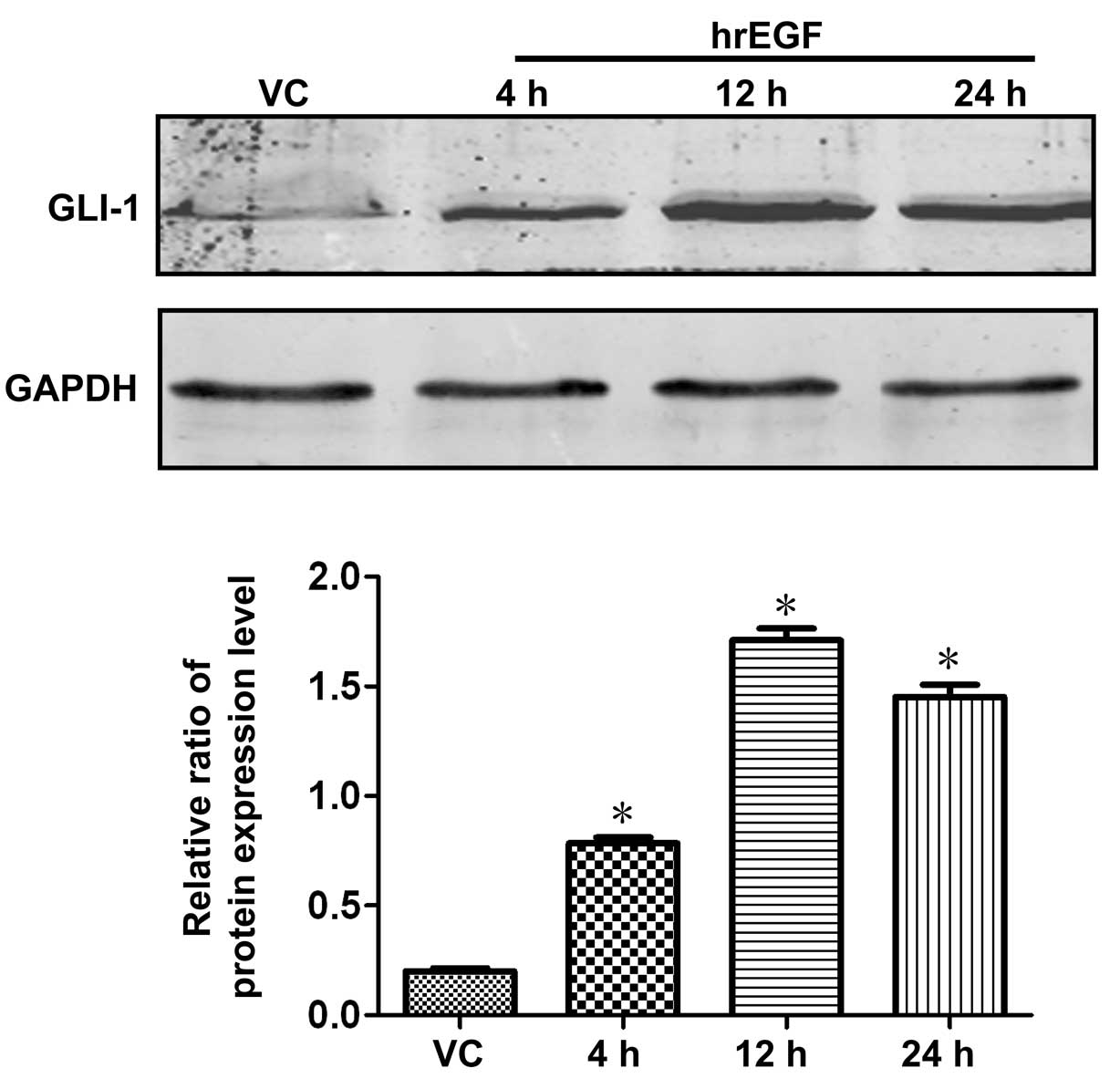|
1
|
Heidenreich A, Bellmunt J, Bolla M, Joniau
S, Mason M, Matveev V, Mottet N, Schmid HP, van der Kwast T, Wiegel
T and Zattoni F; European Association of Urology. EAU guidelines on
prostate cancer. Part 1: Screening, diagnosis, and treatment of
clinically localised disease. Eur Urol. 59:61–71. 2011. View Article : Google Scholar : PubMed/NCBI
|
|
2
|
Bosetti C, Bertuccio P, Chatenoud L, Negri
E, La Vecchia C and Levi F: Trends in mortality from urologic
cancers in Europe, 1970–2008. Eur Urol. l60:1–15. 2011.
|
|
3
|
Mottet N, Bellmunt J, Bolla M, Joniau S,
Mason M, Matveev V, Schmid HP, Van der Kwast T, Wiegel T, Zattoni F
and Heidenreich A: EAU guidelines on prostate cancer. Part II:
Treatment of advanced, relapsing, and castration-resistant prostate
cancer. Eur Urol. 59:572–583. 2011. View Article : Google Scholar
|
|
4
|
Hammerer P and Madersbacher S: Landmarks
in hormonal therapy for prostate cancer. BJU Int. 110(Suppl 1):
23–29. 2012. View Article : Google Scholar
|
|
5
|
Wolff JM and Mason M: Drivers for change
in the management of prostate cancer - guidelines and new treatment
techniques. BJU Int. 109(Suppl 6): 33–41. 2012. View Article : Google Scholar : PubMed/NCBI
|
|
6
|
Gao D, Vahdat LT, Wong S, Chang JC and
Mittal V: Microenvironmental regulation of epithelial-mesenchymal
transitions in cancer. Cancer Res. 72:4883–4889. 2012. View Article : Google Scholar : PubMed/NCBI
|
|
7
|
Lim J and Thiery JP:
Epithelial-mesenchymal transitions: insights from development.
Development. 139:3471–3486. 2012. View Article : Google Scholar : PubMed/NCBI
|
|
8
|
Nieto MA and Cano A: The
epithelial-mesenchymal transition under control: global programs to
regulate epithelial plasticity. Semin Cancer Biol. 22:361–368.
2012. View Article : Google Scholar : PubMed/NCBI
|
|
9
|
Acloque H, Adams MS, Fishwick K,
Bronner-Fraser M and Nieto MA: Epithelial-mesenchymal transitions:
the importance of changing cell state in development and disease. J
Clin Invest. 119:1438–1449. 2009. View
Article : Google Scholar : PubMed/NCBI
|
|
10
|
Zhau HE, Odero-Marah V, Lue HW, Nomura T,
Wang R, Chu G, Liu ZR, Zhou BP, Huang WC and Chung LW: Epithelial
to mesenchymal transition (EMT) in human prostate cancer: lessons
learned from ARCaP model. Clin Exp Metastasis. 25:601–610. 2008.
View Article : Google Scholar : PubMed/NCBI
|
|
11
|
Zhau HY, Chang SM, Chen BQ, Wang Y, Zhang
H, Kao C, Sang QA, Pathak SJ and Chung LW: Androgen-repressed
phenotype in human prostate cancer. Proc Natl Acad Sci USA.
93:15152–15157. 1996. View Article : Google Scholar : PubMed/NCBI
|
|
12
|
Zhau HE, Li CL and Chung LW: Establishment
of human prostate carcinoma skeletal metastasis models. Cancer.
88(12 Suppl): 2995–3001. 2000. View Article : Google Scholar : PubMed/NCBI
|
|
13
|
Seshacharyulu P, Ponnusamy MP, Haridas D,
Jain M, Ganti AK and Batra SK: Targeting the EGFR signaling pathway
in cancer therapy. Expert Opin Ther Targets. 16:15–31. 2012.
View Article : Google Scholar : PubMed/NCBI
|
|
14
|
Gregg J and Fraizer G: Transcriptional
regulation of EGR1 by EGF and the ERK signaling pathway in prostate
cancer cells. Genes Cancer. 2:900–909. 2011. View Article : Google Scholar : PubMed/NCBI
|
|
15
|
Teixeira AL, Ribeiro R, Cardoso D, Pinto
D, Lobo F, Fraga A, Pina F, Calais-da-Silva F and Medeiros R:
Genetic polymorphism in EGF is associated with prostate cancer
aggressiveness and progression-free interval in androgen
blockade-treated patients. Clin Cancer Res. 14:3367–3371. 2008.
View Article : Google Scholar : PubMed/NCBI
|
|
16
|
Cathomas R, Rothermundt C, Klingbiel D,
Bubendorf L, Jaggi R, Betticher DC, Brauchli P, Cotting D, Droege
C, Winterhalder R, Siciliano D, Berthold DR, Pless M, Schiess R,
von Moos R and Gillessen S; Swiss Group for Clinical Cancer
Research SAKK. Efficacy of cetuximab in metastatic
castration-resistant prostate cancer might depend on EGFR and PTEN
expression: results from a phase II trial (SAKK 08/07). Clin Cancer
Res. 18:6049–6057. 2012. View Article : Google Scholar : PubMed/NCBI
|
|
17
|
Humez S, Monet M, Legrand G, Lepage G,
Delcourt P and Prevarskaya N: Epidermal growth factor-induced
neuroendocrine differentiation and apoptotic resistance of
androgen-independent human prostate cancer cells. Endocr Relat
Cancer. 13:181–195. 2006. View Article : Google Scholar
|
|
18
|
Traish AM and Morgentaler A: Epidermal
growth factor receptor expression escapes androgen regulation in
prostate cancer: a potential molecular switch for tumour growth. Br
J Cancer. 101:1949–1956. 2009. View Article : Google Scholar
|
|
19
|
Gan Y, Shi C, Inge L, Hibner M, Balducci J
and Huang Y: Differential roles of ERK and Akt pathways in
regulation of EGFR-mediated signaling and motility in prostate
cancer cells. Oncogene. 29:4947–4958. 2010. View Article : Google Scholar : PubMed/NCBI
|
|
20
|
Chen M, Carkner R and Buttyan R: The
Hedgehog/Gli signaling paradigm in prostate cancer. Expert Rev
Endocrinol Metab. 6:453–467. 2011. View Article : Google Scholar : PubMed/NCBI
|
|
21
|
Kim TJ, Lee JY, Hwang TK, Kang CS and Choi
YJ: Hedgehog signaling protein expression and its association with
prognostic parameters in prostate cancer: a retrospective study
from the view point of new 2010 anatomic stage/prognostic groups. J
Surg Oncol. 104:472–479. 2011. View Article : Google Scholar
|
|
22
|
Efstathiou E, Karlou M, Wen S, Hoang A,
Pettaway CA, Pisters LL, Maity S, Troncoso P and Logothetis CJ:
Integrated Hedgehog signaling is induced following castration in
human and murine prostate cancers. Prostate. 73:153–161. 2013.
View Article : Google Scholar : PubMed/NCBI
|
|
23
|
Sheng T, Li C, Zhang X, Chi S, He N, Chen
K, McCormick F, Gatalica Z and Xie J: Activation of the Hedgehog
pathway in advanced prostate cancer. Mol Cancer. 3:292004.
View Article : Google Scholar : PubMed/NCBI
|
|
24
|
Wu K, Fan J, Zhang L, Ning Z, Zeng J, Zhou
J, Li L, Chen Y, Zhang T, Wang X, Hsieh JT and He D: PI3K/Akt to
GSK3β/β-catenin signaling cascade coordinates cell colonization for
bladder cancer bone metastasis through regulating ZEB1
transcription. Cell Signal. 24:2273–2282. 2012.
|
|
25
|
Xue Y, Li L, Zhang D, Wu K, Chen Y, Zeng
J, Wang X and He D: Twisted epithelial-to-mesenchymal transition
promotes progression of surviving bladder cancer T24 cells with
hTERT-dysfunction. PLoS One. 6:e277482011. View Article : Google Scholar : PubMed/NCBI
|
|
26
|
Zhu G, Zhau HE, He H, Zhang L, Shehata B,
Wang X, Cerwinka WH, Elmore J and He D: Sonic and desert Hedgehog
signaling in human fetal prostate development. Prostate.
67:674–684. 2007. View Article : Google Scholar : PubMed/NCBI
|
|
27
|
Li L, He D, He H, Wang X, Zhang L, Luo Y
and Nan X: Overexpression of PML induced apoptosis in bladder
cancer cell by caspase dependent pathway. Cancer Lett. 236:259–268.
2006. View Article : Google Scholar : PubMed/NCBI
|
|
28
|
Podlasek CA, Barnett DH, Clemens JQ, Bak
PM and Bushman W: Prostate development requires Sonic hedgehog
expressed by the urogenital sinus epithelium. Dev Biol. 209:28–39.
1999. View Article : Google Scholar : PubMed/NCBI
|
|
29
|
Berman DM, Desai N, Wang X, Karhadkar SS,
Reynon M, Abate-Shen C, Beachy PA and Shen MM: Roles for Hedgehog
signaling in androgen production and prostate ductal morphogenesis.
Dev Biol. 267:387–398. 2004. View Article : Google Scholar : PubMed/NCBI
|
|
30
|
Freestone SH, Marker P, Grace OC,
Tomlinson DC, Cunha GR, Harnden P and Thomson AA: Sonic Hedgehog
regulates prostatic growth and epithelial differentiation. Dev
Biol. 264:352–362. 2003. View Article : Google Scholar : PubMed/NCBI
|
|
31
|
Pu Y, Huang L and Prins GS: Sonic
Hedgehog-patched Gli signaling in the developing rat prostate
gland: lobe-specific suppression by neonatal estrogens reduces
ductal growth and branching. Dev Biol. 273:257–275. 2004.
View Article : Google Scholar : PubMed/NCBI
|
|
32
|
Sanchez P, Hernández AM, Stecca B, Kahler
AJ, DeGueme AM, Barrett A, Beyna M, Datta MW, Datta S and Ruiz i
Altaba A: Inhibition of prostate cancer proliferation by
interference with SONIC HEDGEHOG-GLI1 signaling. Proc Natl Acad Sci
USA. 101:12561–12566. 2004. View Article : Google Scholar : PubMed/NCBI
|
|
33
|
Stecca B, Mas C and Ruiz i Altaba A:
Interference with HH-GLI signaling inhibits prostate cancer. Trends
Mol Med. 11:199–203. 2005. View Article : Google Scholar : PubMed/NCBI
|
|
34
|
Azoulay S, Terry S, Chimingqi M, Sirab N,
Faucon H, Gil Diez de Medina S, Moutereau S, Maillé P, Soyeux P,
Abbou C, Salomon L, Vacherot F, de La Taille A, Loric S and Allory
Y: Comparative expression of Hedgehog ligands at different stages
of prostate carcinoma progression. J Pathol. 216:460–470. 2008.
View Article : Google Scholar : PubMed/NCBI
|
|
35
|
Karhadkar SS, Bova GS, Abdallah N, Dhara
S, Gardner D, Maitra A, Isaacs JT, Berman DM and Beachy PA:
Hedgehog signalling in prostate regeneration, neoplasia and
metastasis. Nature. 431:707–712. 2004. View Article : Google Scholar : PubMed/NCBI
|
|
36
|
Shaw G, Price AM, Ktori E, Bisson I,
Purkis PE, McFaul S, Oliver RT and Prowse DM: Hedgehog signalling
in androgen independent prostate cancer. Eur Urol. 54:1333–1343.
2008. View Article : Google Scholar : PubMed/NCBI
|
|
37
|
Chen G, Goto Y, Sakamoto R, Tanaka K,
Matsubara E, Nakamura M, Zheng H, Lu J, Takayanagi R and Nomura M:
GLI1, a crucial mediator of sonic Hedgehog signaling in prostate
cancer, functions as a negative modulator for androgen receptor.
Biochem Biophys Res Commun. 404:809–815. 2011. View Article : Google Scholar : PubMed/NCBI
|
|
38
|
Ingham PW, Nakano Y and Seger C:
Mechanisms and functions of Hedgehog signalling across the metazoa.
Nat Rev Genet. 12:393–406. 2011. View Article : Google Scholar : PubMed/NCBI
|
|
39
|
Yang L, Xie G, Fan Q and Xie J: Activation
of the Hedgehog-signaling pathway in human cancer and the clinical
implications. Oncogene. 29:469–481. 2010. View Article : Google Scholar : PubMed/NCBI
|
|
40
|
Varjosalo M and Taipale J: Hedgehog:
functions and mechanisms. Genes Dev. 22:2454–2472. 2008. View Article : Google Scholar : PubMed/NCBI
|
|
41
|
Lauth M and Toftgård R: Non-canonical
activation of GLI transcription factors: implications for targeted
anti-cancer therapy. Cell Cycle. 6:2458–2463. 2007. View Article : Google Scholar : PubMed/NCBI
|
|
42
|
Jenkins D: Hedgehog signalling: emerging
evidence for non-canonical pathways. Cell Signal. 21:1023–1034.
2009. View Article : Google Scholar : PubMed/NCBI
|
|
43
|
Stecca B and Ruiz i Altaba A:
Context-dependent regulation of the GLI code in cancer by Hedgehog
and non-Hedgehog signals. J Mol Cell Biol. 2:84–95. 2010.
View Article : Google Scholar : PubMed/NCBI
|
|
44
|
Ruiz i Altaba A, Mas C and Stecca B: The
Gli code: an information nexus regulating cell fate, stemness and
cancer. Trends Cell Biol. 17:438–447. 2007.PubMed/NCBI
|
|
45
|
Riobo NA, Lu K and Emerson CP Jr: Hedgehog
signal transduction: signal integration and cross talk in
development and cancer. Cell Cycle. 5:1612–1615. 2006. View Article : Google Scholar : PubMed/NCBI
|
|
46
|
Migliaccio A, Castoria G, Di Domenico M,
Ciociola A, Lombardi M, De Falco A, Nanayakkara M, Bottero D, De
Stasio R, Varricchio L and Auricchio F: Crosstalk between EGFR and
extranuclear steroid receptors. Ann NY Acad Sci. 1089:194–200.
2006. View Article : Google Scholar : PubMed/NCBI
|
|
47
|
Brand TM, Iida M, Li C and Wheeler DL: The
nuclear epidermal growth factor receptor signaling network and its
role in cancer. Discov Med. 12:419–432. 2011.PubMed/NCBI
|
|
48
|
Dhomen NS, Mariadason J, Tebbutt N and
Scott AM: Therapeutic targeting of the epidermal growth factor
receptor in human cancer. Crit Rev Oncog. 17:31–50. 2012.
View Article : Google Scholar : PubMed/NCBI
|
|
49
|
Peraldo-Neia C, Migliardi G, Mello-Grand
M, Montemurro F, Segir R, Pignochino Y, Cavalloni G, Torchio B,
Mosso L, Chiorino G and Aglietta M: Epidermal growth factor
receptor (EGFR) mutation analysis, gene expression profiling and
EGFR protein expression in primary prostate cancer. BMC Cancer.
11:312011. View Article : Google Scholar : PubMed/NCBI
|
|
50
|
Schlomm T, Kirstein P, Iwers L, Daniel B,
Steuber T, Walz J, Chun FH, Haese A, Kollermann J, Graefen M,
Huland H, Sauter G, Simon R and Erbersdobler A: Clinical
significance of epidermal growth factor receptor protein
overexpression and gene copy number gains in prostate cancer. Clin
Cancer Res. 13:6579–6584. 2007. View Article : Google Scholar : PubMed/NCBI
|
|
51
|
Shariat SF, Bensalah K, Karam JA,
Roehrborn CG, Gallina A, Lotan Y, Slawin KM and Karakiewicz PI:
Preoperative plasma HER2 and epidermal growth factor receptor for
staging and prognostication in patients with clinically localized
prostate cancer. Clin Cancer Res. 13:5377–5384. 2007. View Article : Google Scholar : PubMed/NCBI
|
|
52
|
Festuccia C, Gravina GL, Angelucci A,
Millimaggi D, Muzi P, Vicentini C and Bologna M: Additive antitumor
effects of the epidermal growth factor receptor tyrosine kinase
inhibitor, gefitinib (Iressa), and the nonsteroidal antiandrogen,
bicalutamide (Casodex), in prostate cancer cells in vitro. Int J
Cancer. 115:630–640. 2005. View Article : Google Scholar
|
|
53
|
Palma V, Lim DA, Dahmane N, Sánchez P,
Brionne TC, Herzberg CD, Gitton Y, Carleton A, Alvarez-Buylla A and
Ruiz i Altaba A: Sonic Hedgehog controls stem cell behavior in the
postnatal and adult brain. Development. 132:335–344. 2005.
View Article : Google Scholar : PubMed/NCBI
|
|
54
|
Palma V and Ruiz i Altaba A: Hedgehog-GLI
signaling regulates the behavior of cells with stem cell properties
in the developing neocortex. Development. 131:337–345. 2004.
View Article : Google Scholar : PubMed/NCBI
|
|
55
|
Bigelow RL, Jen EY, Delehedde M, Chari NS
and McDonnell TJ: Sonic Hedgehog induces epidermal growth factor
dependent matrix infiltration in HaCaT keratinocytes. J Invest
Dermatol. 124:457–465. 2005. View Article : Google Scholar : PubMed/NCBI
|
|
56
|
Kasper M, Schnidar H, Neill GW, Hanneder
M, Klingler S, Blaas L, Schmid C, Hauser-Kronberger C, Regl G,
Philpott MP and Aberger F: Selective modulation of Hedgehog/GLI
target gene expression by epidermal growth factor signaling in
human keratinocytes. Mol Cell Biol. 26:6283–6298. 2006. View Article : Google Scholar : PubMed/NCBI
|
|
57
|
Schnidar H, Eberl M, Klingler S,
Mangelberger D, Kasper M, Hauser-Kronberger C, Regl G, Kroismayr R,
Moriggl R, Sibilia M and Aberger F: Epidermal growth factor
receptor signaling synergizes with Hedgehog/GLI in oncogenic
transformation via activation of the MEK/ERK/JUN pathway. Cancer
Res. 69:1284–1292. 2009. View Article : Google Scholar : PubMed/NCBI
|




















